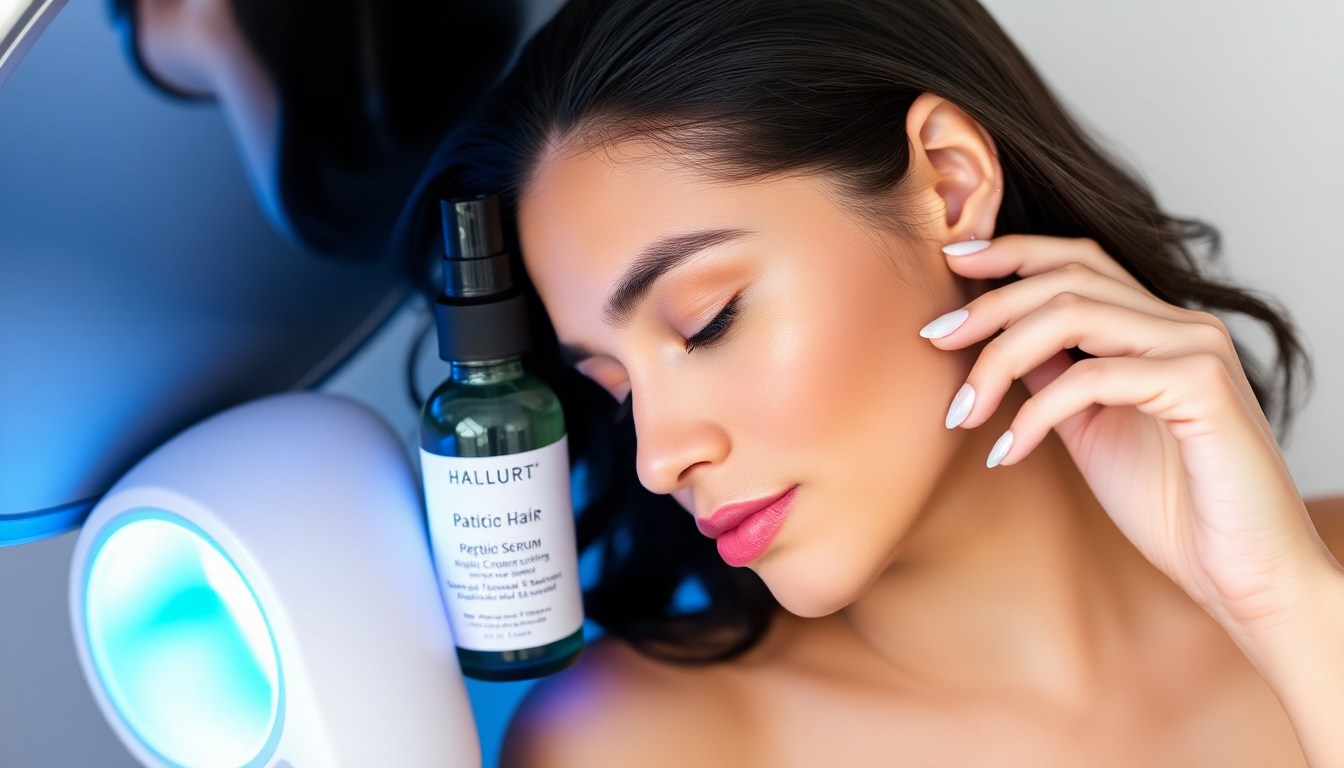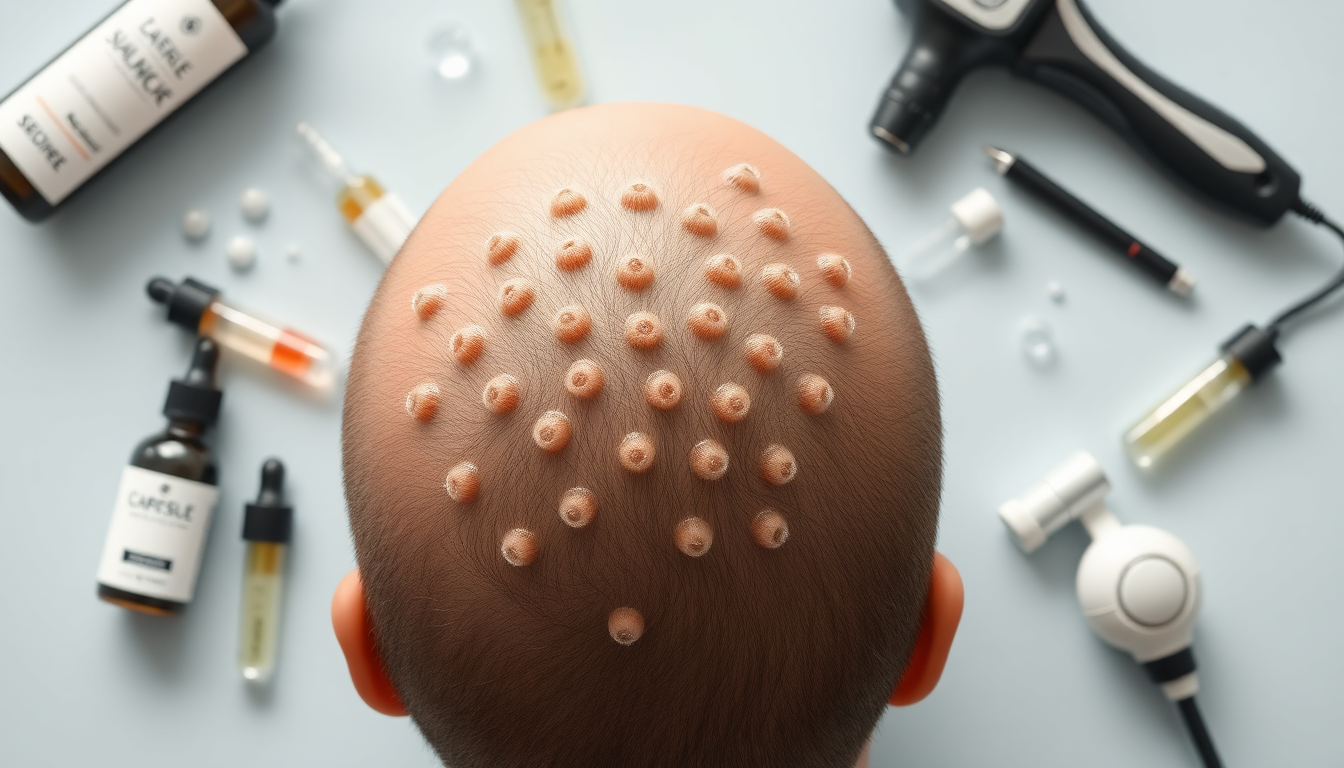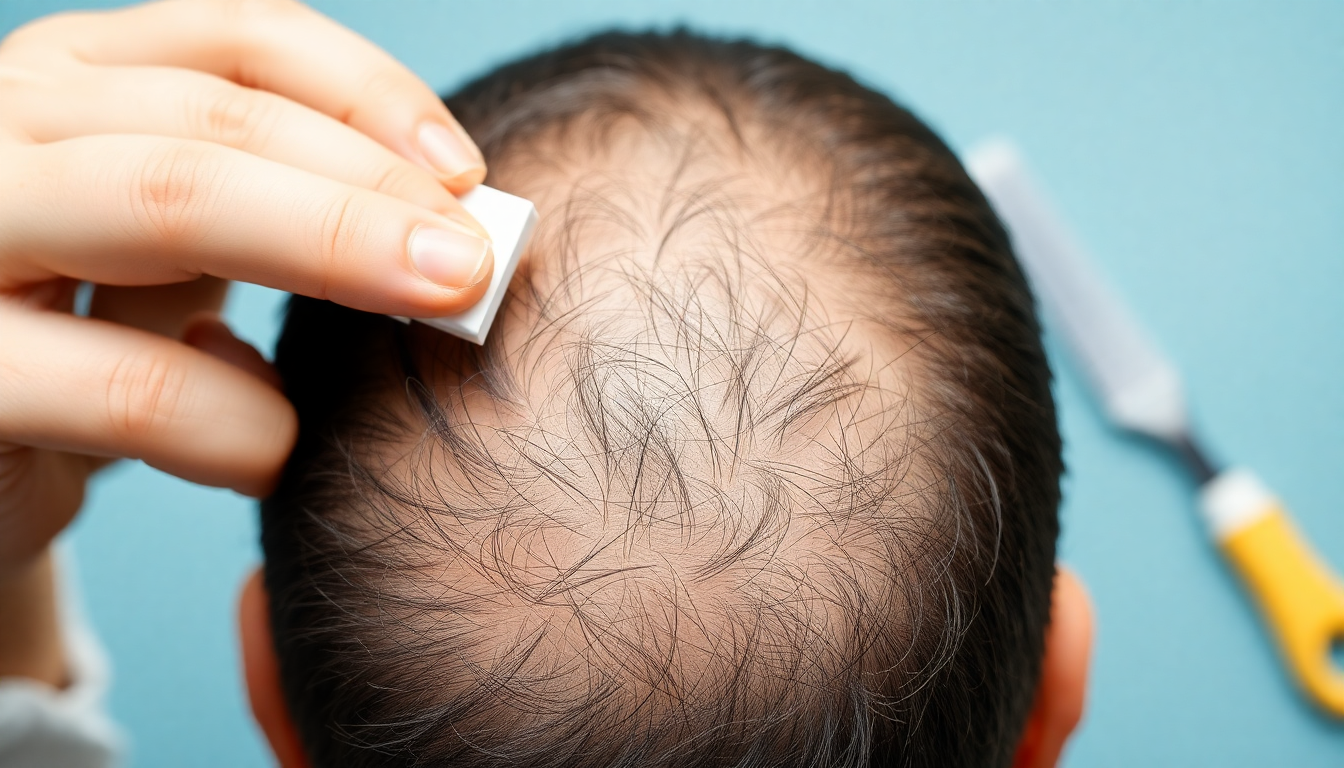Introduction — A smarter, simpler approach to hair density (2025)
In a world of dozens of serums, tonics and gadgets, the minimalist scalp stack is a counter-trend that focuses on outcomes: one high-quality peptide serum, one prebiotic scalp treatment and a single at‑home device (usually low-level light therapy, LLLT). This pared-back routine reduces complexity, improves adherence and concentrates evidence-based actions on the three most influential pathways that affect hair density.

What this article covers
- Why these three pillars work together
- How to choose each product and device
- Detailed daily, weekly and 12-week plans
- Practical layering, safety and troubleshooting tips
- How to measure progress and set realistic expectations
- Where to start — curated shopping checklist and recommended anchor links
The three pillars explained: mechanism and evidence
Each component targets a different root cause or supporting factor for hair density. Understanding the biology helps you use the stack more intelligently.
1) Peptide serum — signaling the follicle
Peptides are small protein fragments that can act as signaling molecules. In topical cosmetics aimed at hair, certain peptides are formulated to influence the follicle environment — helping collagen support structures, modulate inflammation, or encourage anagen (growth) phase signals.
- Commonly used peptides: GHK-Cu (copper peptide), acetyl tetrapeptide-3, biomimetic peptides targeting growth factor pathways.
- How they help: support extracellular matrix, reduce local inflammation, and improve shaft quality. Clinical evidence for specific peptides varies; some show modest improvements in hair thickness and scalp skin health in cosmetic studies.
2) Prebiotic scalp treatment — balancing the scalp ecosystem
The scalp microbiome — the community of bacteria, fungi and other microbes — helps regulate inflammation and barrier function. Prebiotic treatments supply selectively fermentable ingredients (like inulin or oligosaccharides) that feed beneficial microbes and help them outcompete pro-inflammatory strains.
- Benefits: reduced irritation, improved barrier resilience and possibly reduced microinflammation that can inhibit hair growth.
- Important note: prebiotics are not the same as live probiotics. Prebiotics aim to support native beneficial microbes rather than introduce new microbes.
3) At‑home device — cellular stimulation with LLLT
Low-level light therapy (LLLT) devices use specific red and near-infrared wavelengths to stimulate cellular activity in hair follicles. Proposed mechanisms include increased mitochondrial activity (ATP production), improved blood flow and modulation of inflammatory mediators.
- Wavelengths commonly used: 630–670 nm (red) and 800–900 nm (near-infrared).
- Evidence: randomized trials show modest increases in hair count and thickness in some populations with consistent use over months.
Why this combination is logistically and biologically smart
- Complementary modes of action: peptides (biochemical signals), prebiotics (ecosystem health), LLLT (cellular energy).
- Minimal overlap in irritation risk — fewer mixed actives lowers contact dermatitis risk.
- High adherence: simple routines are easier to follow for months, which is essential for hair outcomes.
How to pick the one product for each pillar — detailed buying guide
Quality matters more than price. Here are the features to prioritize when you select a peptide serum, prebiotic treatment and device.
Peptide serum — ingredient and formulation checklist
- Clear peptide listing: look for named peptides (e.g., GHK-Cu, acetyl tetrapeptide-3) rather than vague "peptide complex."
- Supporting ingredients: humectants (glycerin, low-MW hyaluronic acid), ceramides or panthenol for barrier support.
- Concentration transparency: brands that publish peptide concentrations or study details are preferable.
- Gentle base: low fragrance, hypoallergenic preservatives and pH suited for scalp skin (around 4.5–6.5).
- Packaging: dropper or pump to limit contamination; opaque bottle if formula includes light-sensitive components.
- Anchor example: consider a transparently-formulated peptide serum that lists key actives.
Prebiotic scalp treatment — what to look for
- Specific prebiotic ingredients (inulin, fructooligosaccharides, plant oligosaccharides).
- Lightweight delivery system: water-based sprays or tonics that can be applied under serums without greasiness.
- pH and preservative system suitable for scalp products; especially important for sensitive skin.
- Clinical data or microbiome testing references are a plus.
- Anchor suggestion: a dedicated prebiotic scalp treatment that lists ingredients clearly.
LLLT device — how to choose smartly
There are several device types: helmets/caps (full-coverage), combs (targeted), and bulbs/panels. Choose based on lifestyle, consistency and budget.
- Wavelength range: devices in the 630–670 nm band or near-infrared variants are commonly used in trials.
- Power density and treatment time: follow manufacturer guidance; effective sessions are typically 10–20 minutes some days per week.
- Ergonomics: helmets/caps are hands-free and favor adherence; combs are cheaper but require active use.
- Clinical backing: devices with published user studies, safety testing and a clear return policy are preferable.
Layering and timing — how to use the three components together
Good layering avoids product interference and maximizes absorption while preserving device performance.
- Cleanse first on wash days. Apply prebiotic treatment to damp scalp for better spread and absorption.
- Wait 1–2 minutes, then apply the peptide serum to targeted thinning zones. Pat gently rather than rubbing.
- LLLT timing: you can use the device either before topical application (may increase blood flow) or after products are applied. If your device contact is sensitive to wet formulas, allow products to dry first.
- Avoid layering heavy oils or waxes immediately after the peptide serum; they can inhibit penetration and interfere with device contact.
Sample routines — daily, weekly and a detailed 12‑week plan
Simple daily baseline (for busy people)
- Evening or morning: apply prebiotic spray to scalp, then peptide serum to thinning areas. Use device 3× per week for 10–15 minutes.
- On shampoo days (2–3 per week): cleanse first, then continue the above after towel-drying.
12-week beginner program (progress checkpoints)
Weeks 1–4: Habituation and baseline tracking
- Start with patch tests for new products.
- Establish cleansing cadence and consistent product application rituals.
- Photograph baseline: take three standardized photos (top, front, vertex).
Weeks 5–8: Consistent application and early scalp changes
- By week 6 you may notice reduced itchiness, improved scalp comfort or slight texture changes in hair shafts.
- Keep a short weekly log: product use, device sessions, scalp notes and one progress photo.
Weeks 9–12: Evaluate and tweak
- Compare standardized photos and notes. Look for baby hairs, improved density or changes in hair thickness.
- If no improvement and adherence is solid, troubleshoot (see below) or discuss with a dermatologist.
Device comparison: cap vs helmet vs comb — pros and cons
- Helmet/cap: Hands-free, better coverage, higher chance of adherence. Typically more expensive.
- Comb: Targeted, affordable, requires active use and technique. Good for isolated patches.
- Panel/bulb: Cheap and flexible but may require more setup and consistent positioning.
Real-world troubleshooting — common issues and solutions
- Irritation or redness: Stop the topical product, patch-test components separately and reintroduce one at a time. If persistent, see a dermatologist.
- Minimal visible change after 3 months: Verify adherence and consistent device use. Photos help. Some people need 6–12 months to see meaningful density gains.
- Device discomfort: Reduce session time temporarily and ensure helmet fit is correct. Check manufacturer safety guidance.
How to measure progress objectively
- Standardized photography: same camera, lighting, angle and combing each month.
- Trichoscopy or scalp magnifier: take close-up images to track hair shaft diameter and vellus-to-terminal ratios if possible.
- Subjective metrics: confidence, part width, and perceived fullness logged monthly.
Diet, lifestyle and adjuncts that support the minimalist stack
The stack works best when paired with good general practices that support hair health:
- Protein sufficiency: hair is protein-rich; ensure adequate dietary protein.
- Micronutrients: iron, vitamin D, zinc and biotin deficiencies can impair growth — test if you suspect deficiency.
- Stress management: chronic stress can shift hair into telogen (shedding) phase. Sleep, mindfulness and moderate exercise help.
Safety, regulation and realistic claims
LLLT devices are often marketed as cosmetic devices; check local regulatory approvals and manufacturer safety data. Topical peptides and prebiotic tonics are cosmetic/OTC in many jurisdictions; they should avoid making prescription-level disease claims. Always consult a healthcare professional if you have rapid or patchy hair loss, scarring, redness, pain or systemic symptoms.
How to read labels and avoid marketing traps
- Watch for vague "complexes" with no named peptides or no concentration. Transparency is a good sign.
- Ignore overblown claims like "regrows full head of hair" — reputable brands use cautious language and provide study references.
- Prioritize brands that publish ingredient lists, pH information, usage instructions and return policies.
Expanded FAQ
- Can I use this stack with minoxidil? Many people combine topical minoxidil with peptide serums and LLLT. Consult your clinician and watch for irritation — apply in a way that minimizes layering of irritating actives.
- How long before I should expect to stop and declare it ineffective? Give a minimum of 4–6 months (preferably 6–12 months) when adherence is solid. Hair growth cycles are slow.
- Are there age limits? Most adult users can benefit. Expect different baselines of responsiveness based on age, hormonal status and genetic pattern hair loss.
- Any reasons not to use LLLT? Discuss with a healthcare provider if you have photosensitive conditions or are taking photosensitizing medications.
Case example (hypothetical)
Anna, 38, noticed widening part and thinner crown. She implemented a minimalist scalp stack: a peptide serum (GHK-Cu containing serum), a prebiotic scalp spray and a hands-free LLLT cap, used 4× weekly. She tracked photos monthly, slept better, corrected an uncovered iron deficiency and by month 6 reported thicker-looking hair and multiple baby hairs at the crown. Her experience highlights how multi-factor attention (topicals + device + nutrition) often produces the best outcome.
Shopping checklist — what to buy today
- One transparent peptide serum with named peptides and supportive hydrators (glycerin or low-MW hyaluronic acid).
- One prebiotic scalp spray or tonic listing specific prebiotics.
- One LLLT device that fits your budget and lifestyle — prioritize ease-of-use for adherence.
- Optional: moisturizer or light leave-in scalp oils for very dry scalps (use sparingly).
For convenient starting options, explore the Eelhoe peptide serum and Eelhoe prebiotic scalp treatment — both list ingredients and usage guidance to help you decide. Their product pages include images and ingredient callouts so you can compare formulas side by side.
Illustrations and captions



Final checklist before you start
- Patch-test each new topical for 48–72 hours.
- Set a routine: tie application/device use to another daily habit (e.g., after shower or before bedtime).
- Take baseline photos and set monthly reminders to take follow-up photos.
- Plan to re-evaluate at 3 months and again at 6 months with objective photos.
Conclusion — minimal effort, maximum consistency
The minimalist scalp stack is designed for sustained use and practical results: a single, evidence-minded peptide serum to support follicle signaling; a prebiotic scalp treatment to balance the microbiome and reduce inflammation; and one dependable at-home LLLT device to stimulate cellular activity. By eliminating redundant products and focusing on adherence, you increase your odds of achieving meaningful density gains over months rather than weeks.
If you're ready to simplify and commit, consider starting with carefully formulated options. Explore the Eelhoe peptide serum and Eelhoe prebiotic scalp treatment to begin building your minimalist scalp stack. Their product pages include ingredient details, usage instructions and images to help you choose wisely. Ready to simplify your routine and start tracking real progress? Visit Eelhoe to shop curated scalp essentials and begin your journey toward improved hair density today.
Quick references & next steps
- Start: purchase one peptide serum, one prebiotic tonic and one LLLT device that fits your life.
- Track: baseline photo, monthly photos and a short adherence log.
- Review: reassess at 3 months; adjust or consult a clinician if needed.




اترك تعليقًا
تخضع جميع التعليقات للإشراف قبل نشرها.
This site is protected by hCaptcha and the hCaptcha Privacy Policy and Terms of Service apply.